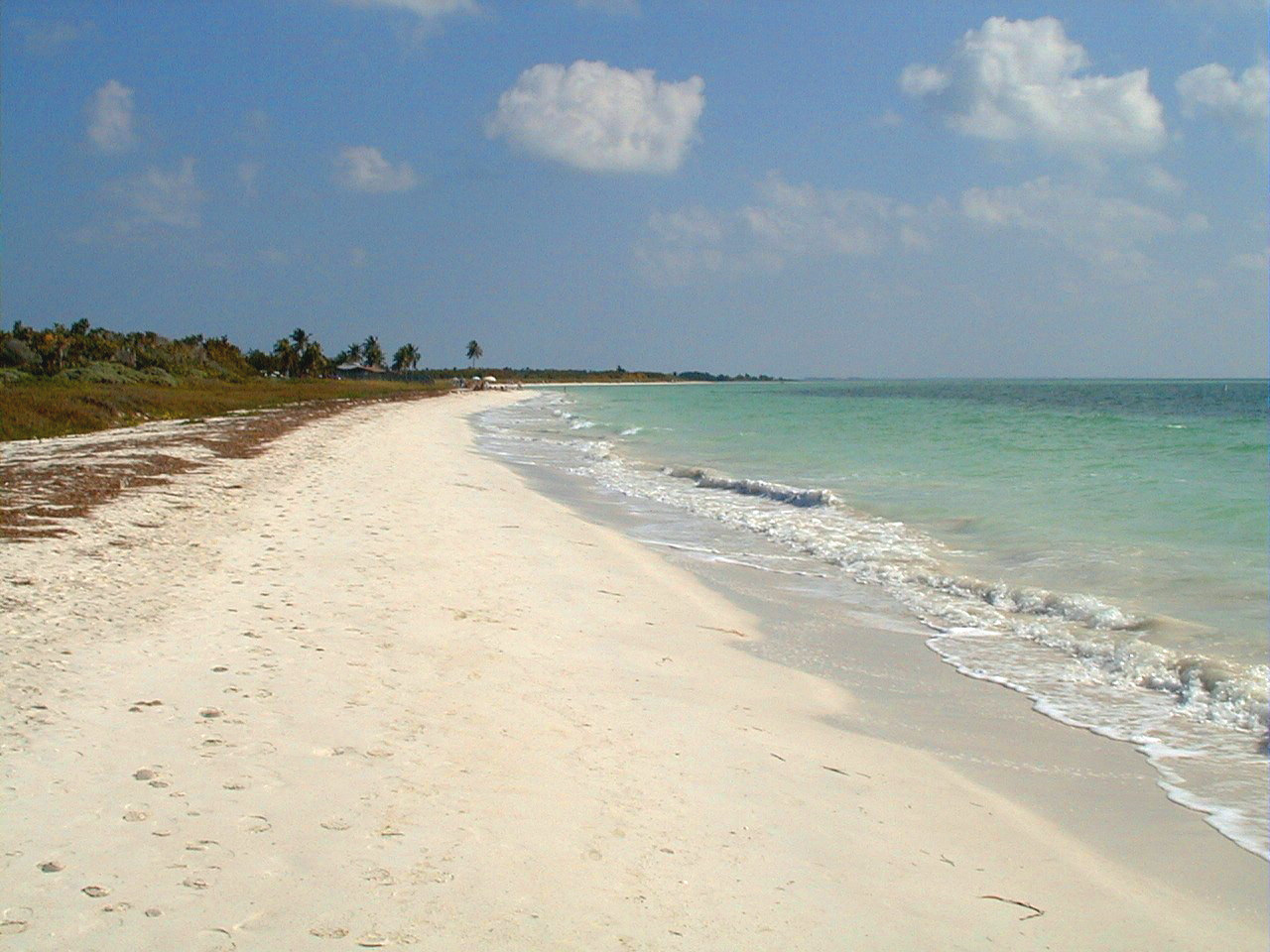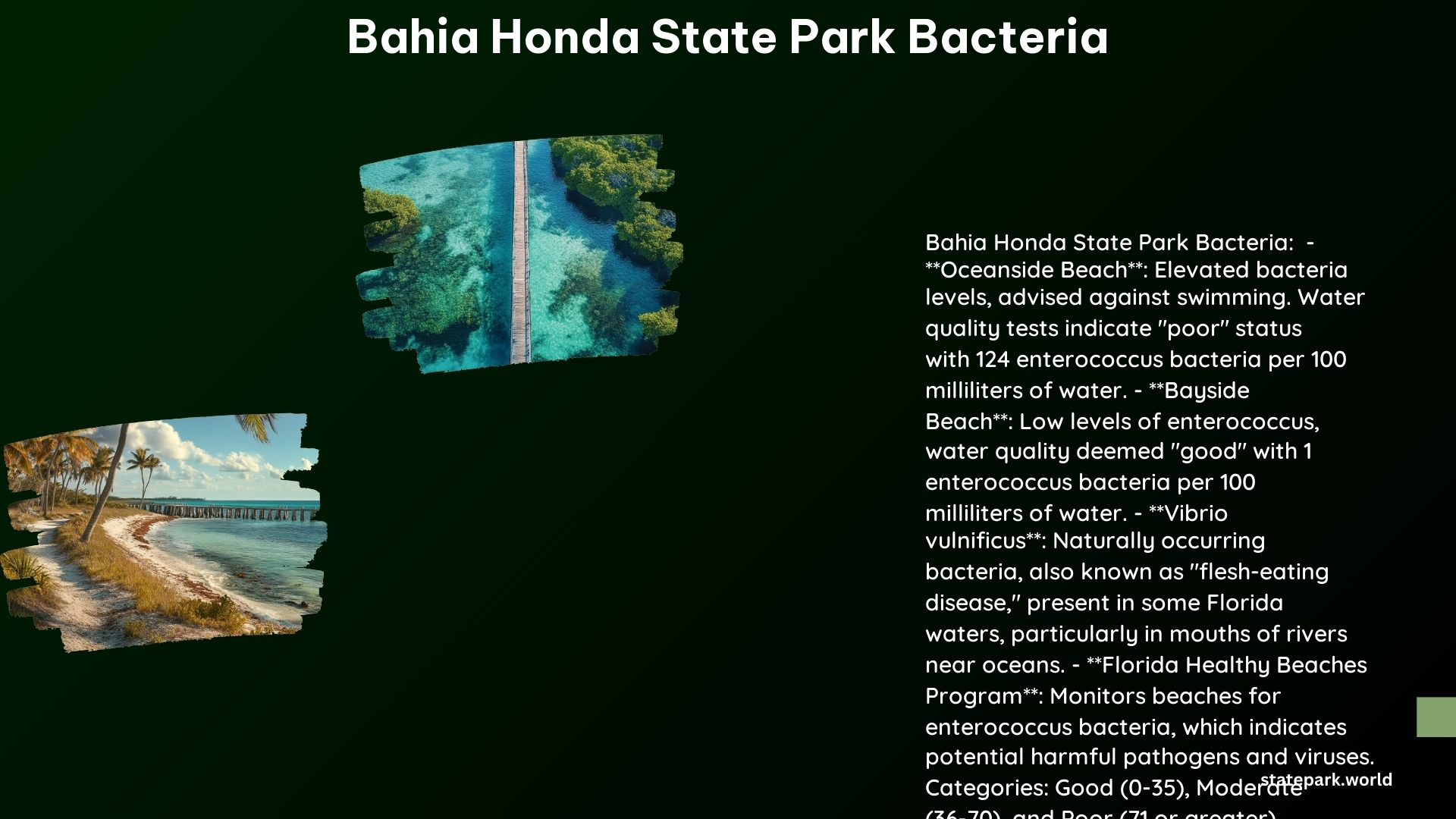Bahia Honda State Park, a picturesque destination in the Florida Keys, has faced ongoing challenges with high bacteria levels in its waters. As a state park enthusiast or tour planner, it’s crucial to understand the current situation and the measures in place to address this issue. In this comprehensive blog post, we’ll dive deep into the bacteria levels, the park’s management strategies, and the impact of beach grooming and maintenance on water quality.
Bacteria Levels in the Water at Bahia Honda State Park

The Florida Department of Health has issued a public health advisory for Bahia Honda State Park due to elevated levels of enterococci bacteria in the water. These bacteria can pose a risk to human health, potentially causing infections, rashes, or other illnesses.
According to the Florida Healthy Beaches Program, the water quality at Bahia Honda State Park has been categorized as follows:
| Water Quality Category | Enterococci per 100 milliliters of marine water |
|---|---|
| Good | 0-35 |
| Moderate | 36-70 |
| Poor | 71 or greater |
The recent advisory was issued because the bacteria levels exceeded the EPA’s threshold of 70.5 or higher, placing the water quality in the “Poor” category.
Measures in Place to Control Bacteria at Bahia Honda State Park

To address the high bacteria levels, the Florida Department of Health conducts regular water quality monitoring at Bahia Honda State Park and other beaches in the Florida Keys. If the initial testing reveals elevated bacteria levels, the beach is resampled, and if the levels remain high, a public health advisory is issued to warn the public of potential health risks.
Impact of Beach Grooming and Maintenance on Bacteria Levels
The management of beach grooming and maintenance practices at Bahia Honda State Park can have a significant impact on the bacteria levels in the water. Stormwater runoff, which can carry various pollutants, can contribute to the presence of bacteria. Additionally, wildlife and human activities on the beach can also be a source of bacteria.
Proper beach grooming and maintenance, such as removing debris, managing stormwater, and controlling access to sensitive areas, can help mitigate the impact of these factors and potentially reduce the bacteria levels in the water.
Vibrio Vulnificus: An Additional Concern
Bahia Honda State Park’s waters also contain Vibrio vulnificus bacteria, which can be particularly dangerous, especially for individuals with compromised immune systems. This bacteria can cause severe infections and even be life-threatening in some cases.
Conclusion
Bahia Honda State Park’s ongoing battle with high bacteria levels in its waters is a complex issue that requires a multifaceted approach. As a state park enthusiast or tour planner, it’s essential to stay informed about the current water quality conditions and the measures in place to address this challenge.
By understanding the bacteria levels, the park’s management strategies, and the impact of beach grooming and maintenance, you can make informed decisions and provide valuable guidance to visitors. Remember to always check for the latest updates and advisories before planning your visit to Bahia Honda State Park, ensuring a safe and enjoyable experience for all.
References:
- https://hillsborough.floridahealth.gov/newsroom/2022/07/bahia-simmons-beach-advisory-07282022.html
- https://ocean.floridamarine.org/fknms_wqpp/floridabeach.htm
- https://keysweekly.com/42/swim-advisories-issued-for-several-florida-keys-beaches-amid-elevated-bacteria-levels/
- https://reserve.floridastateparks.org/Web/
- https://www.theswimguide.org/beach/1454.
